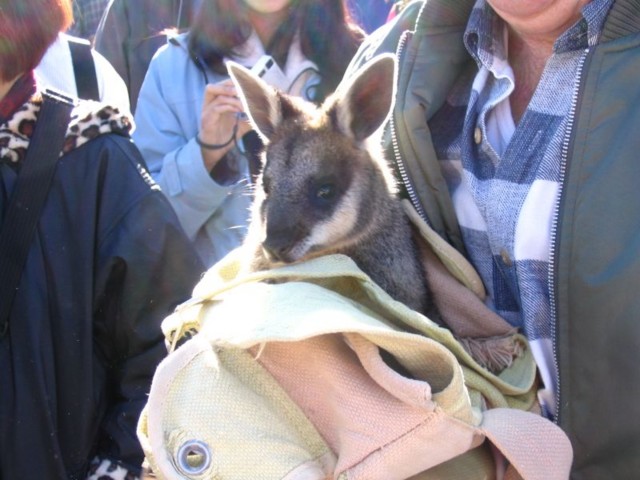
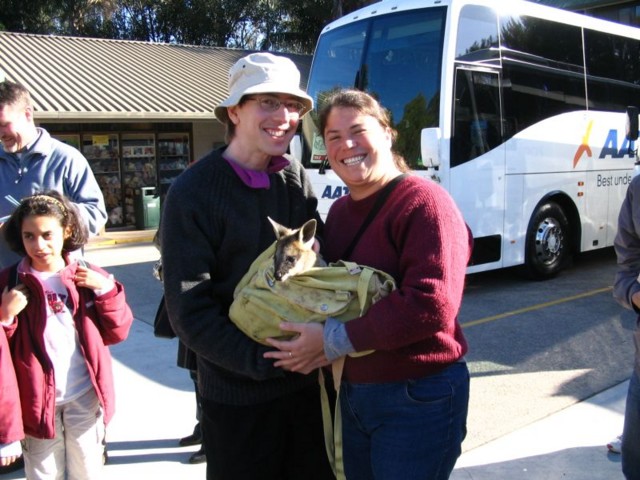
When preparing this web-site, I asked Orit to help out by writing about various parts of the trip. Her description of our next day, the day of our trip to the Blue Mountains, began with the statement that this was a very special day for me because it started with breakfast in McDonald's, and I, normally, don't eat breakfast. The truth of the matter is that it was a very special day for many reasons. This was the only day of our three-odd weeks in Sydney that we spent outside the city. We did this by booking a day-tour to the Blue Mountains, which is a mountain range just west of Sydney.
To be geographically correct, it should be stated that this mountain range crosses all of Australia north to south, but it's not always called the Blue Mountains. Just south of the Blue Mountains, for example, it's called the Snowy Mountains. Why "Snowy Mountains"? You've guessed it. Because it snows there. Australians are not very inventive when it comes to names. So what's the deal with "Blue" mountains. Well, they're blue. That's the whole trick.
To be precise, the Blue Mountains refers to a forest of eucalyptus trees that is on and between these mountains. These gum trees produce tons of eucalyptus oil that is then carried in the air. Light rays are refracted by this oil as they travel through the air, and the whole area gets a bluish hue in the process.
The Blue Mountains are one of Australia's world heritage sites because of these facts, and at the time we visited them, Orit and I were still much less cynical about such things than when we reached Melbourne.
This was a day in which we took ton-loads of pictures, and the best way to learn about it is simply to visit the gallery. I will, therefore, try to be brief.
The tour guide was a guy named Michael who doubled as the bus driver and receives from us the "best tour guide" award for this trip. He was fun, he made things interesting. Even in long, event-less parts of the drive, he kept the mood up by playing a cassette with songs that were both fun to hear and historically important. Some of them, for example, were influential in Australia's decision to unite its states into one country.
I remember one anecdote of his, about somebody having found a copse of roughly 200 trees somewhere in the Blue Mountains that were of a specific species of eucalyptus that was considered 60 million years extinct. The finding was only a few years before, and the Blue Mountains preservation group decided to keep their location a secret in order to keep them safe. Believe it or not, this is something that happens in Australia all the time. This country that is so obviously hostile to life, being the driest of all continents and containing an inordained number of things that can kill you in an instant, has, inexplicably, the trait that every single form of life in it, whether domestic or foreign, flourishes immediately. The entire country is one giant time-capsule for species that have been extinct elsewhere, and if one of these days an errant researcher stumbles over a baby mastodon, believe me that I will be the least surprised person in the world.
Our trip to the Blue Mountains had many stops in it. I'll concentrate on the most interesting ones. First, we visited a wild-life park. According to Michael, it is located very close to a failed amusement park that closed down. Apparently, nobody considered how far it is from all other things. (On the other hand, Sydney's own "Luna Park" is known for the many times its ferris wheel broke down, and every time you mention the park to a Sydney resident he will tell you that "I'm sure it's perfectly safe this time", whether or not you mention the ferris wheel to him.)
In this stop we


held a baby kangaroo,
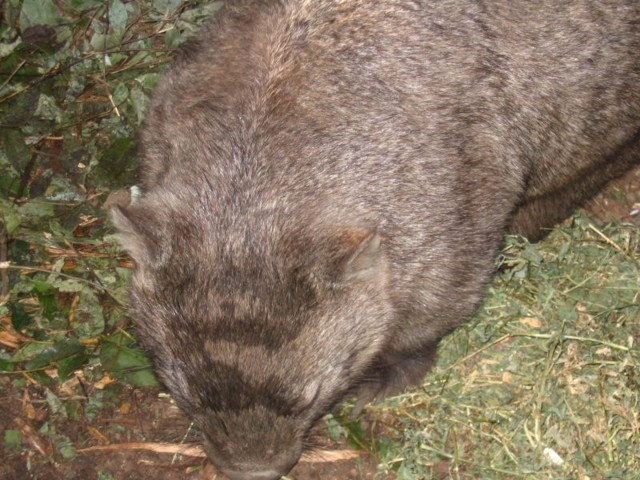
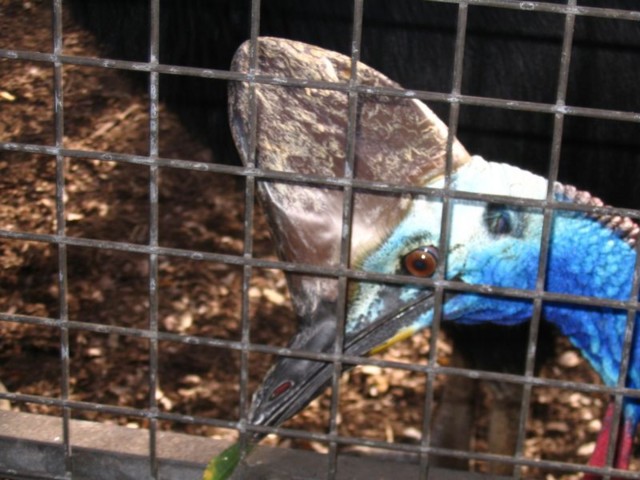
photographed a wombat and an emu,
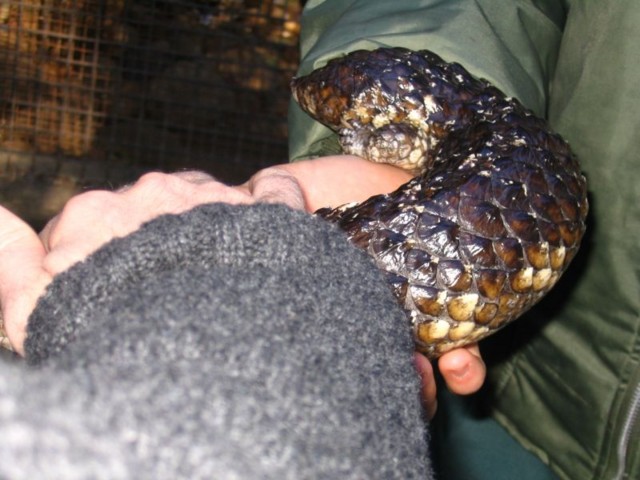
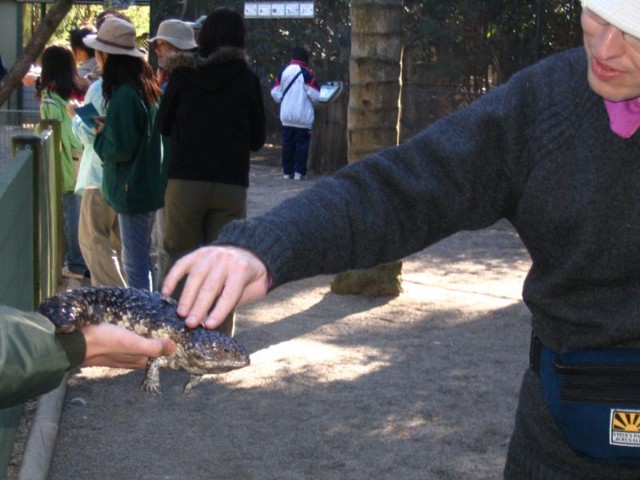
touched some unspeakable things,
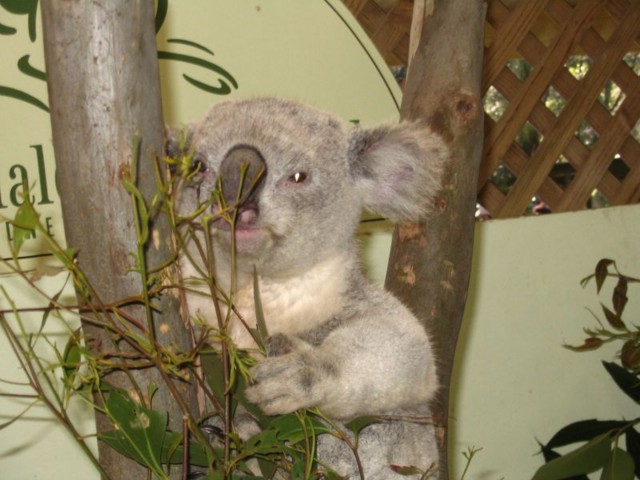
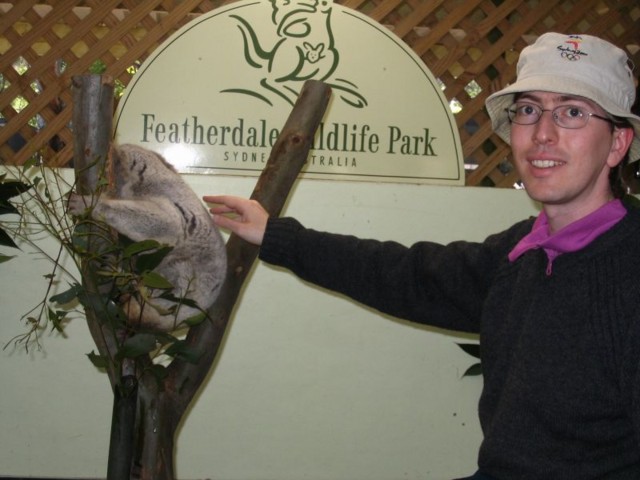
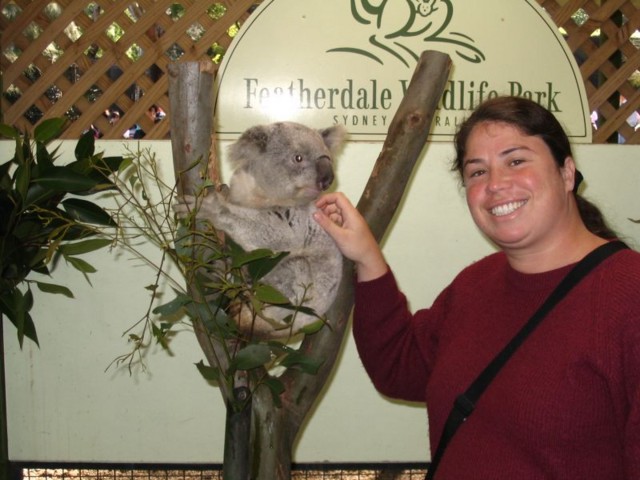
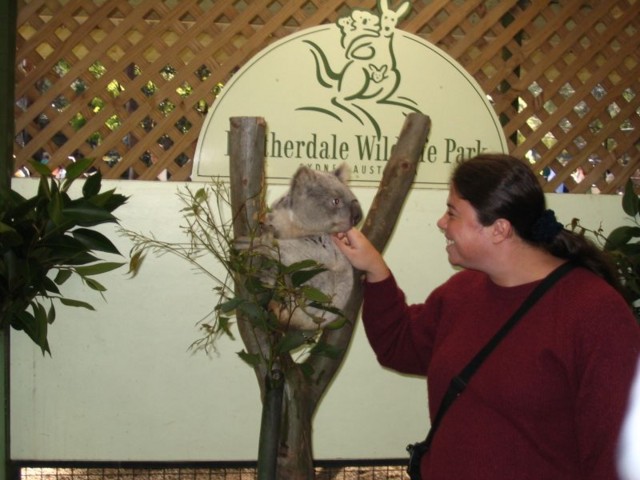
petted a koala (note how much distance I am keeping from it. Koalas will bite your fingers off for no reason and with no warning. The only reason they are not doing it to us, is because on petting days they get the best leaves),
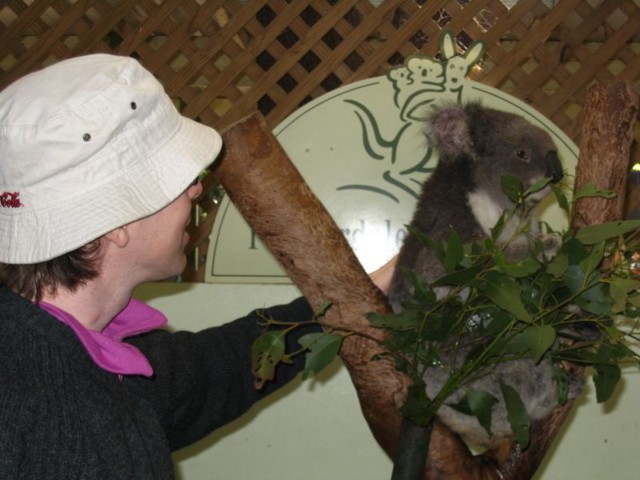
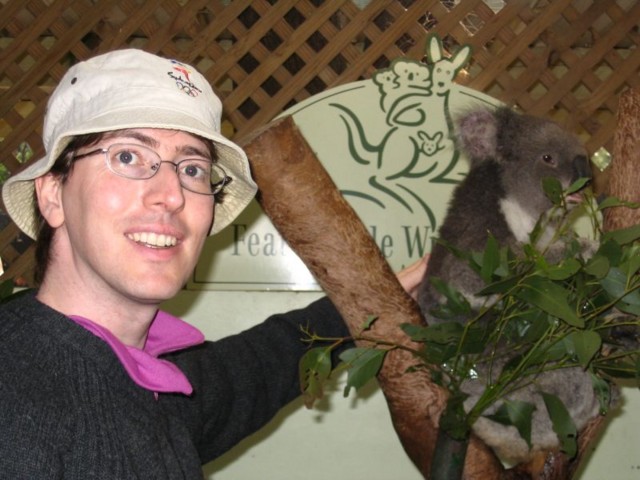
(but in the end, you see, I got into the spirit of things)
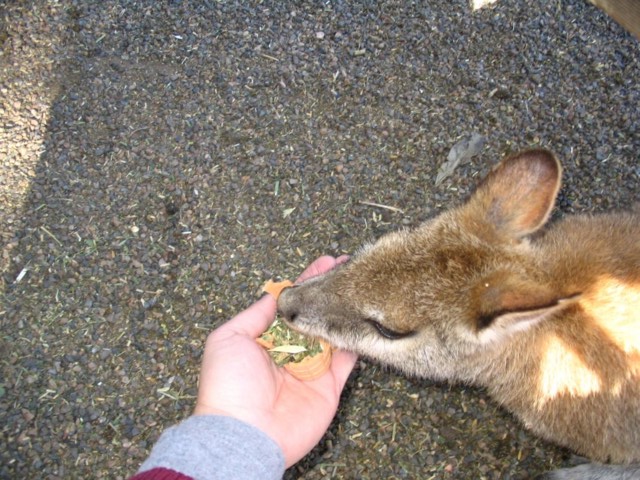
we fed a wallaby,
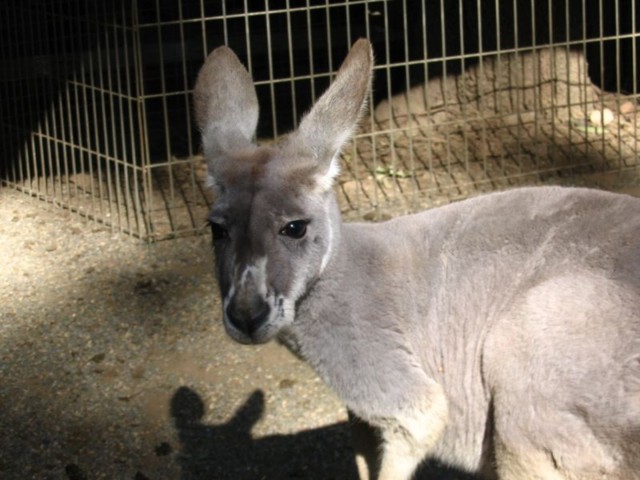
a gray kangaroo, too,
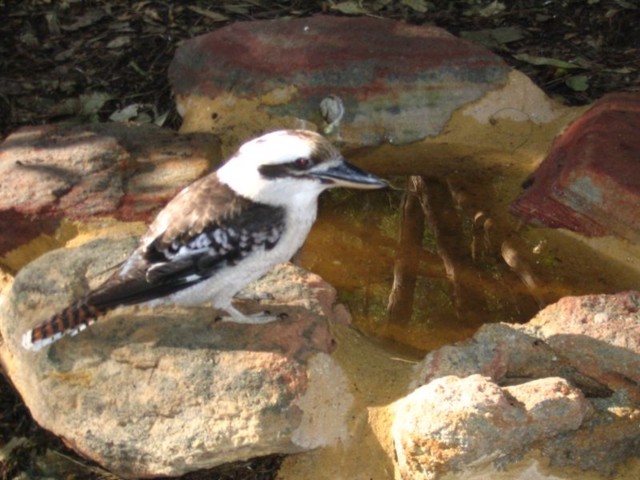
got buzzed by a kookaburra,
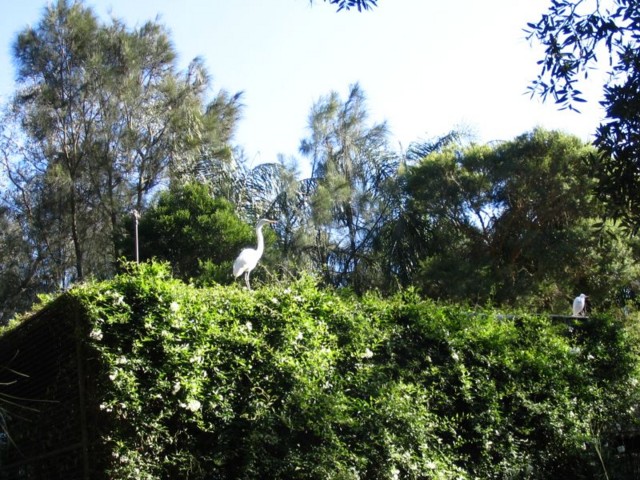
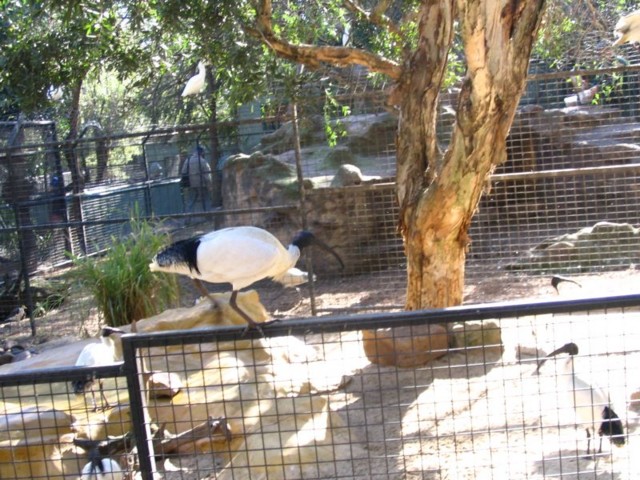
larger things, too, (they roam the park freely)
etcetera, etcetera, etcetera: bats and birds, dingos and frogs, snakes and penguin, you name it, they got it. One particularly interesting exhibit were the albinos. Albinos are sacred animals to some, potent omens to others, religious symbols to others still, but they don't tend to survive very well in the wild, so Australian zoos have many of them. In this park, they had an albino peacock (now that's a sight to see) and several albino wallabies of different sorts.
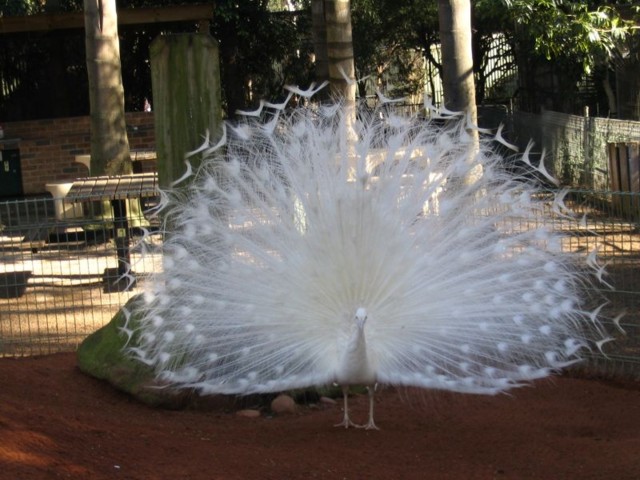
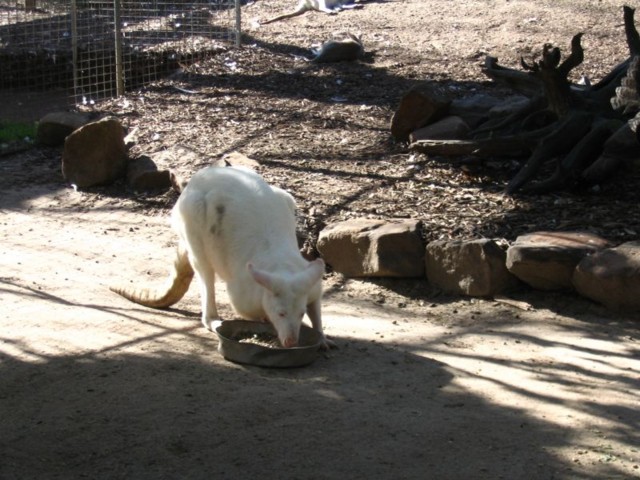
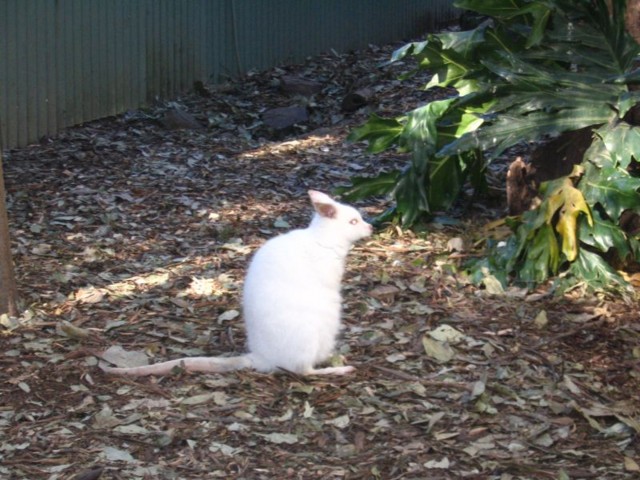
I was looking for an albino donkey, but they didn't have any.
From there we drove on to this place.
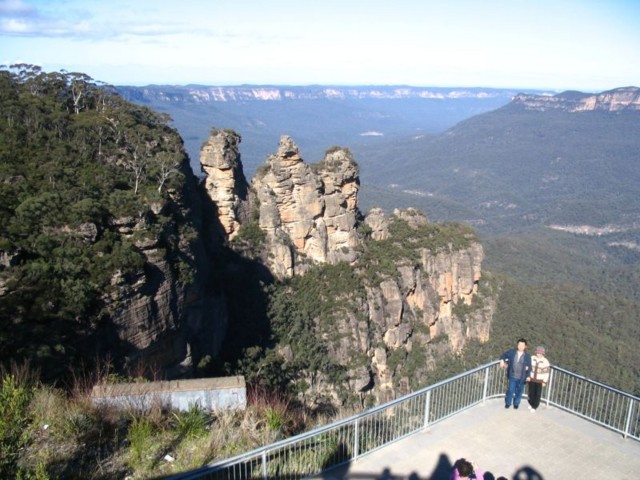
In the background you can see the blue haze that gives this mountain-range its name, but I am told that on the day we were there the haze was rather weak. In all other respects, this was the best weather they had in weeks. It was warm and very comfortable, as opposed to the near-freezing temperatures of earlier days in the week. The Blue Mountains are rather high, so near-freezing temperatures are the rule, rather than the exception.
These are the Three Sisters.
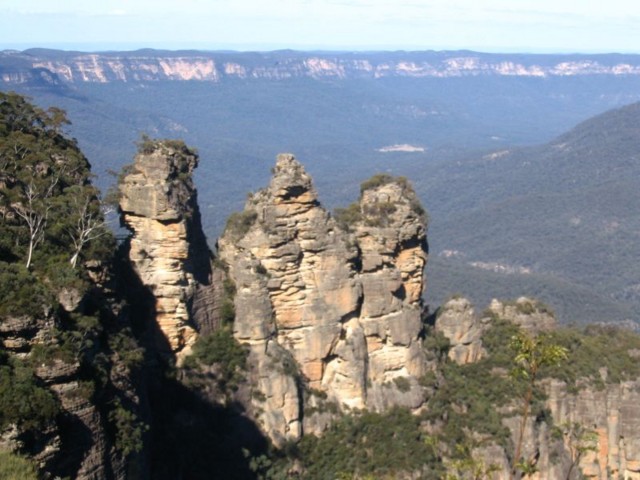
They are the center-piece of all the Blue Mountains. To give you an idea of how much, on our way we stopped in Leura, a sleepy town whose main income is tourism to the Blue Mountains. It is mostly known for its candy shop, featuring candy that just can't be found anywhere else. Just beside the entrance, I saw an entire wall dedicated solely to postcards featuring pictures of the Three Sisters, all taken from the same location, but in different weathers. My favorite two were an all-black image entitled "The Blue Mountains at Night" and an all-white image entitled "The Blue Mountains in the Mist".
Geologically, the Three Sisters started off as seven, but four already crumbled throughout the millennia. In Aboriginal mythology (a.k.a. "Dreamtime"), the Three Sisters were three daughters of a man who possessed a magic bone. He used the bone to turn his sisters into rocks in order to protect them from some grave danger (which may or may not have been an ill-fitting suitor), then turned himself into a dingo, in order not to be caught. All this would have worked according to plan had it not been for some tragic intervention of fate, that did not allow him to reverse the situation. The bone was lost. He died many years later as a dingo and the three sisters are still stone, waiting to be returned to their original form. The Aborigines even have a name for each of the three, but I don't remember these.
About a kilometer off to one side, we came to a canyon which was our next stop. Originally, this place (as many others in the area) was a mine, but then somebody realized that they make more money by allowing people in to take pictures than they do from the mining, so the mines were closed and this became a full-scale tourist attraction. At some point, somebody had the great idea of using the canyon as the back-drop for a monumental roller-coaster. This idea, however, was never realized due to not passing safety regulations. At the time we arrived, the roller coaster track was to be seen, half-built, and according to Michael they now started building it again, after hiring some new professionals to help them design it so that it will pass all necessary paperwork.
What did operate was a cable-car that takes one side-to-side across the canyon.
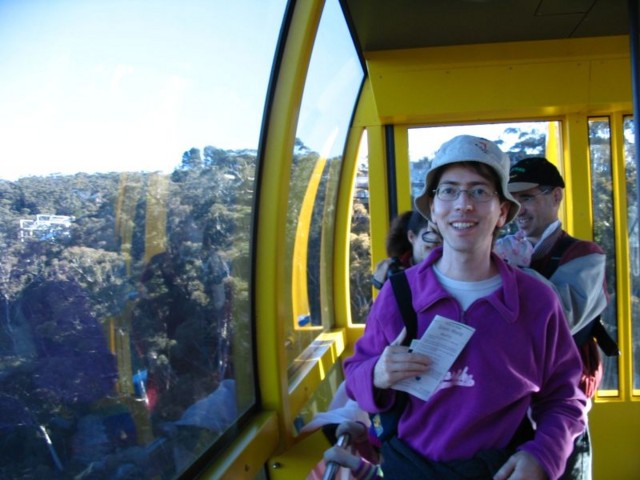
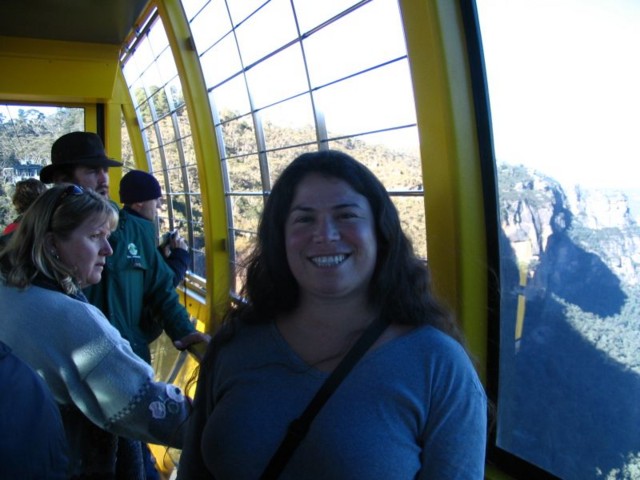
It was fully equipped with a see-through glass floor
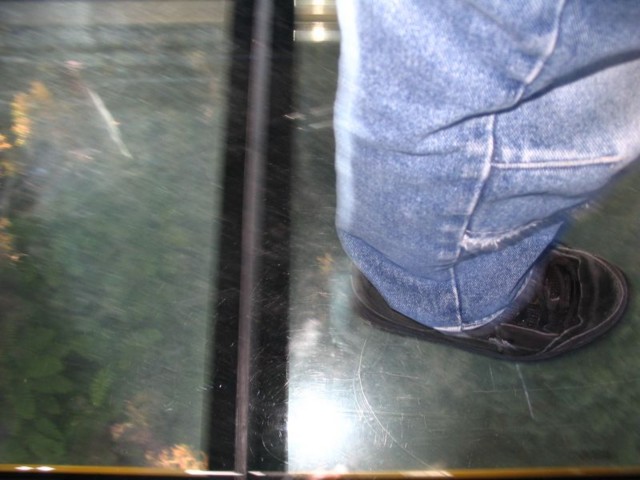
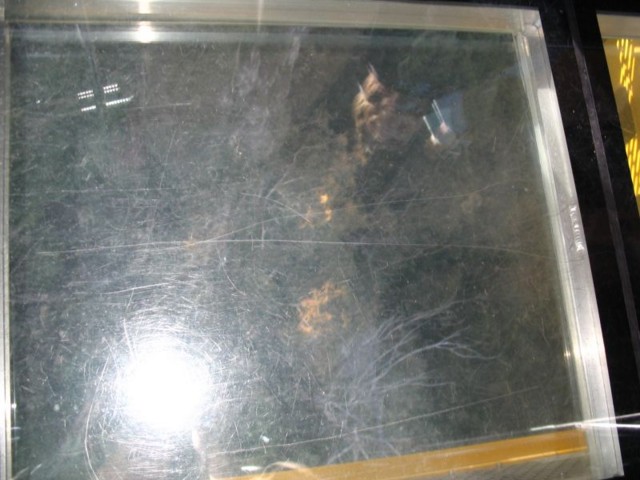
and its very own guide
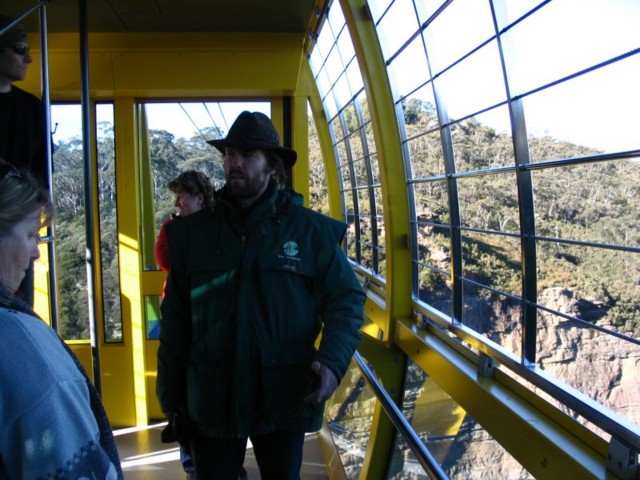
The guide explained to us that the name given to the whole area (can't remember it right now) is really the Aboriginal name for this waterfall.
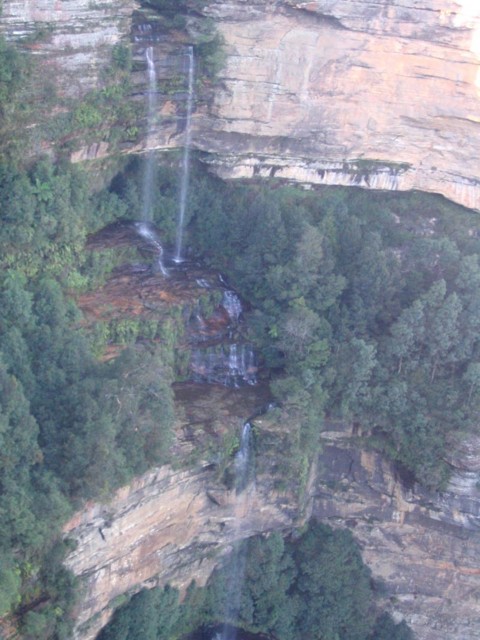
The name means "rushing water", but due to several years of drought in Australia, it is now no more than a trickle. The guide said he didn't know the Aboriginal name for "trickle".
In addition to the cable-car they also had there a mountain-side railway that reached angles in excess of forty-five degrees. It was scary. You came in, arranged yourself in a lying-down position, then, as soon as the car started rolling, you were standing up again.
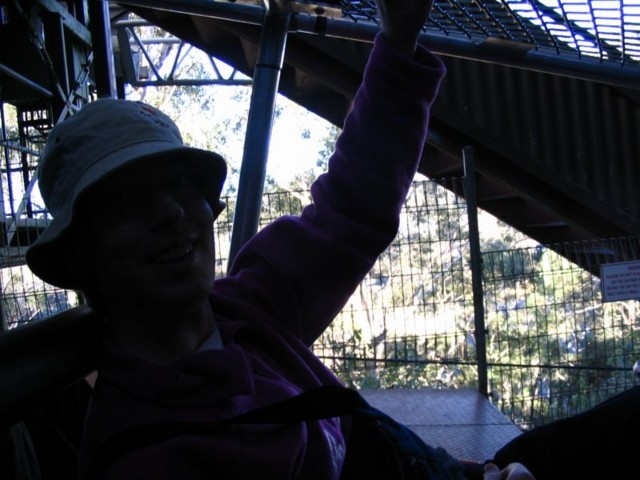
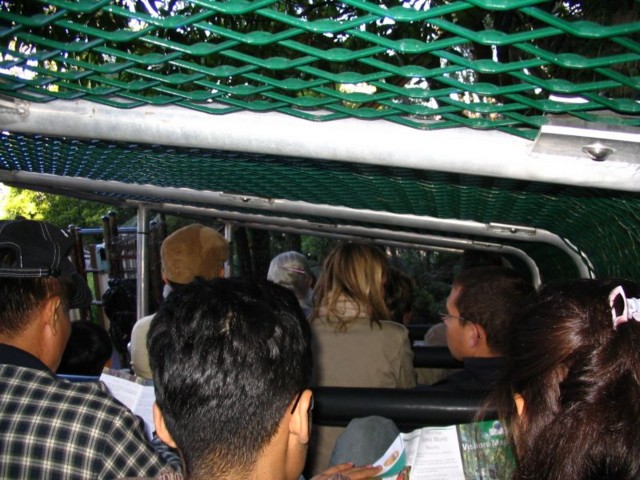
Once down, it was possible to take a walk in the woods, but we didn't have time for it, so we just saw the exhibit explaining about the old mine,
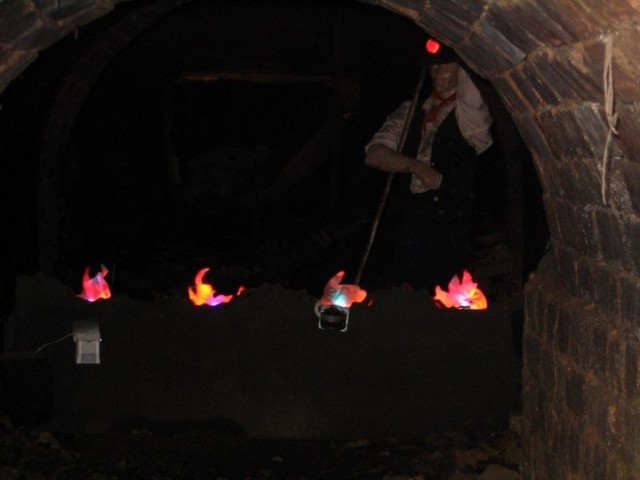
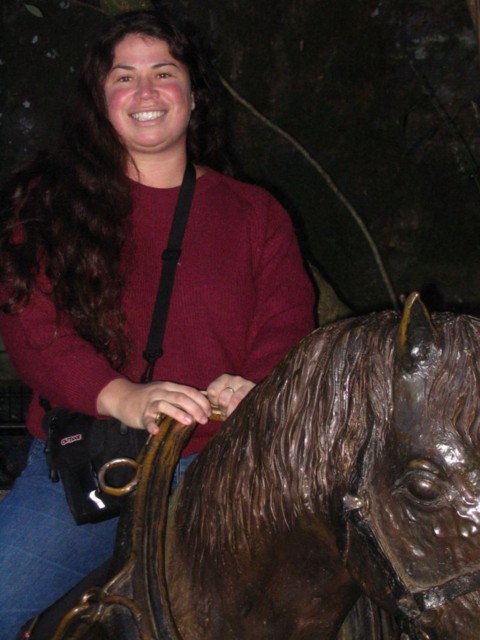
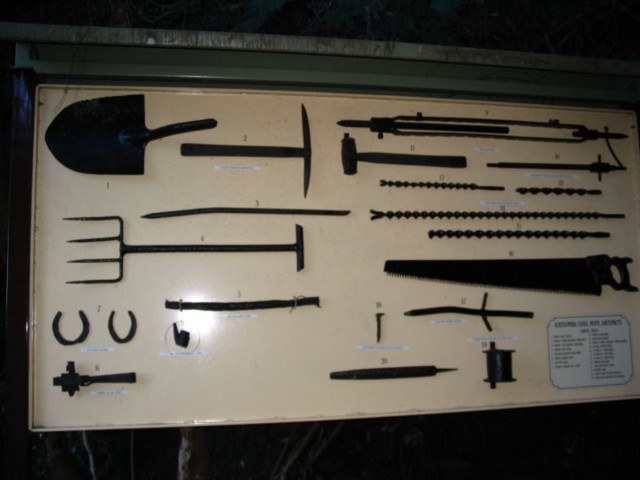
and then we went up in the third transportation vehicle the place had to offer, which was a mountain-side cable-car. So, altogether, your options were to ride horizontally, vertically or diagonally. As you understand, we chose to go through all three, which is why we didn't have much time to walk in the woods and actually see the forest for ourselves. From what we did see, the walking there is over a boardwalk, so as not to disturb the forest floor. (Smart thinking, if you want to keep the place as a thriving forest and a thriving tourist area for a long, long time.)
Finally, completing a day of a huge number of different means of transportation, we took a ferry back to Circular Quay.
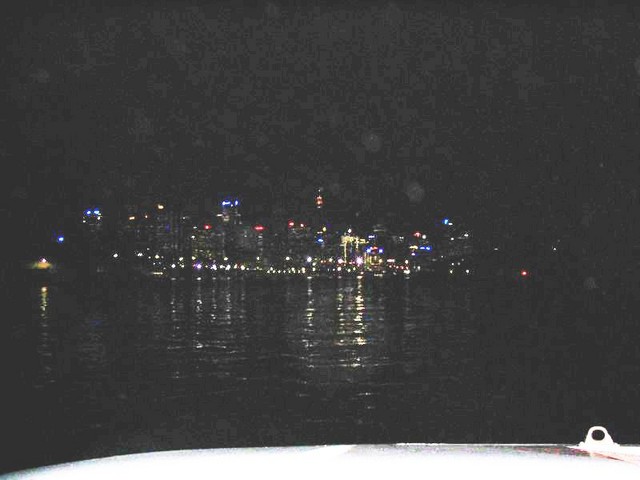
Completing a fine day, we also bought a boomerang, authentically made and decorated by Aborigines, demonstrated by Michael the tour-guide to actually return, and sold - unbelievably - for a reasonable price.